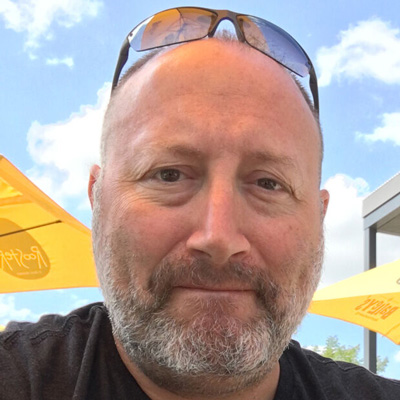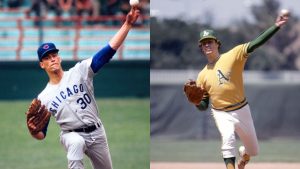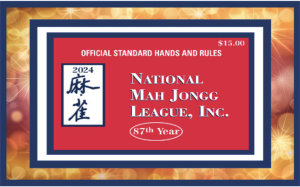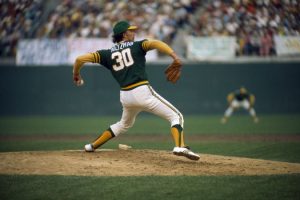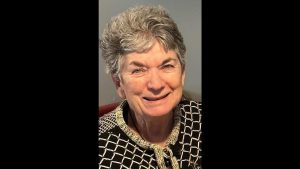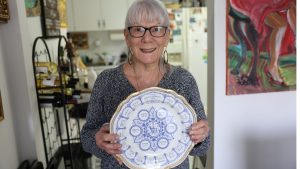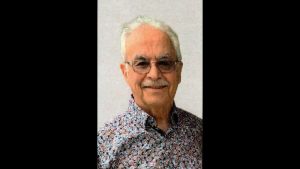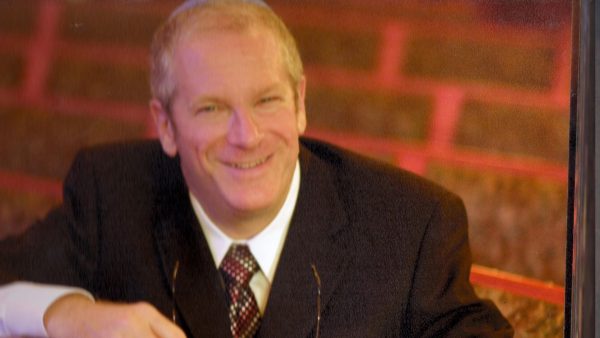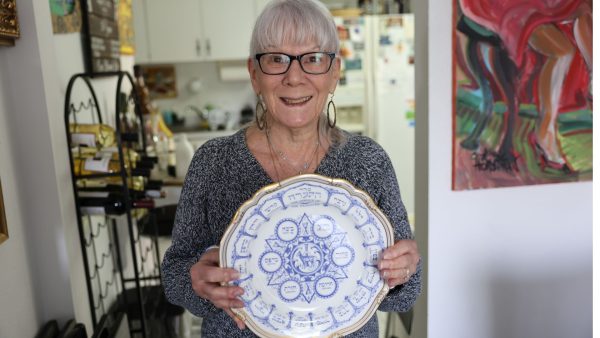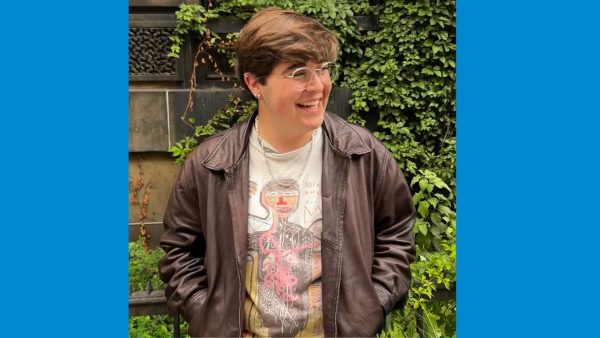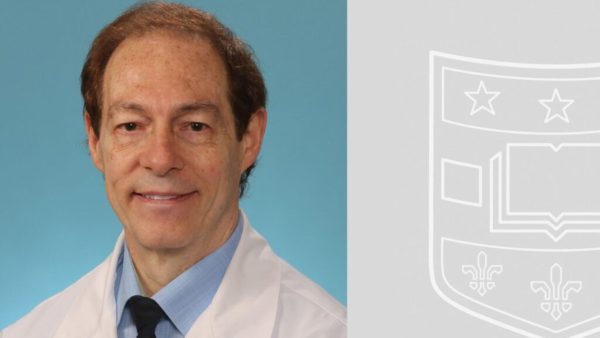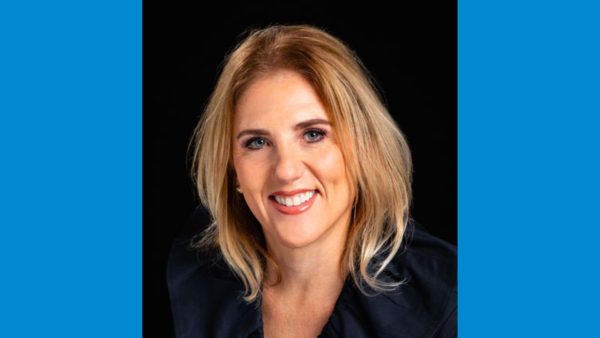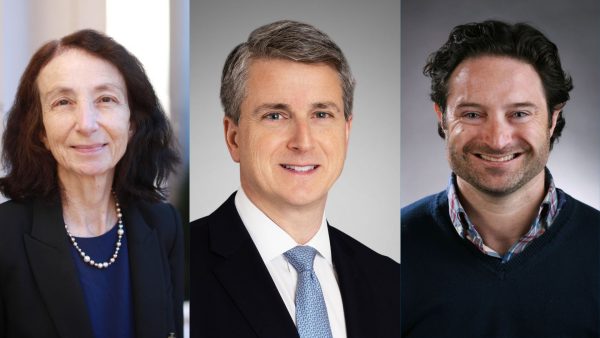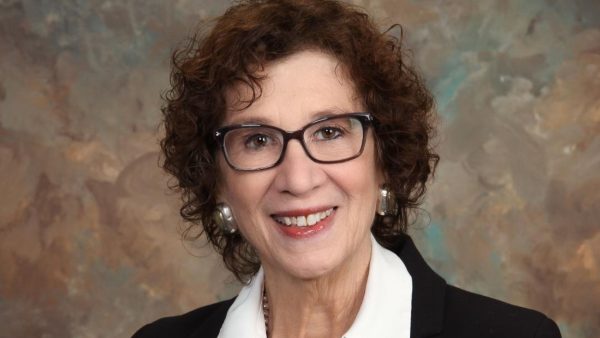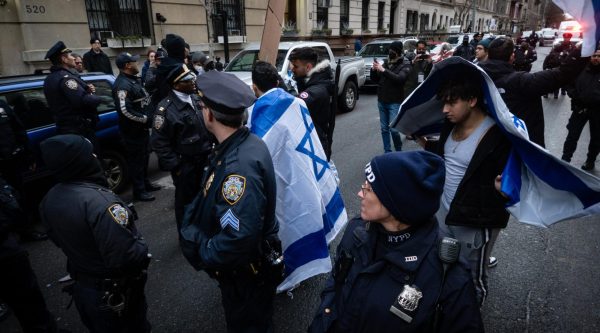“I’m left-handed now, but originally I was right-handed,” Serot said. “I was pitching in Little League baseball, and, one time, I was a primary pitcher and pitched a no-hitter, but hurt my right arm really bad.”
Racquetball’s (very Jewish) St. Louis story
How the J and local Jewish teens played a pivotal role in the sport in the ’70s and ’80s.
Published June 10, 2022
It’s well known that many St. Louisans are prideful about living in a “baseball town.” Perhaps, less well known is that St. Louis was once also known as a “racquetball town.”
More specifically, the Jewish Community Center is front and center in the story of St. Louis becoming a hotbed for professional racquetball and why so many Jewish St. Louis kids found success and changed the game in the 1970s and 80s.
The birth of the game
According to the U.S. Racquetball Museum, the game was created by Joseph Sobeck, a professional tennis and handball player who ran a YMCA in Greenwich, Conn. In 1950, Sobeck invented the new game based on squash and handball rules and designed the first short strung racket.
Sobeck’s new game, referred to as paddleball, quickly caught on with both YMCAs and Jewish Community Centers, where an estimated 40,000 courts were already in existence. In St. Louis, the Jewish Community Center Association (now the J) and its 21 courts, along with its director of health and physical education, Phil Smith, were early proponents and supporters of Sobeck and his game.
1969
The game grew steadily in popularity through the 1960s, but 1969 was the year the game changed, and St. Louis became a part of the next wave.
Four significant events occurred during the year. First, the U.S. Handball Association helped create the International Racquetball Association (IRA). Second, a San Diego tennis pro named Bob McInerny coined the term, “racquetball” giving the sport a new name. Third, the first metal racquet was introduced, and lastly, St. Louis and the J were chosen to host the first International Racquetball Association Nationals Singles Tournament.
A History Of Excellence
It was this tournament whereby several future national and international racquetball champions first learned to play and hone their skills.
“I remember going and watching Bud Muehleisen edge out Charlie Brumfield in a close tiebreaker during the finals of the first national racquetball championship in 1969,” said Jerry Hilecher, 67, a former racquetball champion who grew up in St. Louis but now lives in Los Angeles. “After the match, my parents bought me my first Muehleisen racquet.”
Hosting the 1969 tournament was a catalyst for the J and interest in racquetball quickly grew among Jewish kids. The J hosted the tournament again in April 1970 and attracted entries from all over the country.
“Racquetball is in its infancy,” said Phil Smith during an interview with the Light’s Bobbi Linkemer in 1970. “The sport is still in its developmental stages, and we have a lot to learn about strategy, new shots and general potential for the game.”
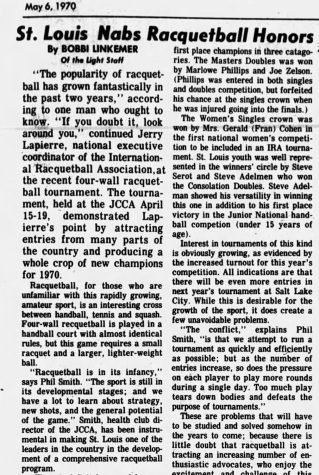
Smith, who worked at the J for 32 years, was instrumental in making St. Louis one of the leaders in the country by developing a comprehensive racquetball program. He passed away in 2009 at the age of 87.
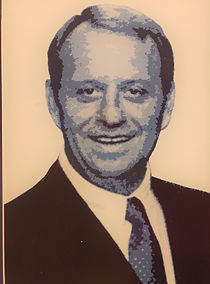
“We’re physical educators here, and we believe in this sport,” Smith said. “We make the equipment available, encourage people to play and we give instruction to anyone who wants or needs it.”
In preparation for the 1970 tournament, the J revamped all its courts and added a few new ones. The tournament was a total success despite St. Louis’ favorite Steve Schneider losing in the second round. Another local highlight remains a part of racquetball history: St. Louisan Fran Cohen won the first United States Racquetball Association Open National Singles Championship.
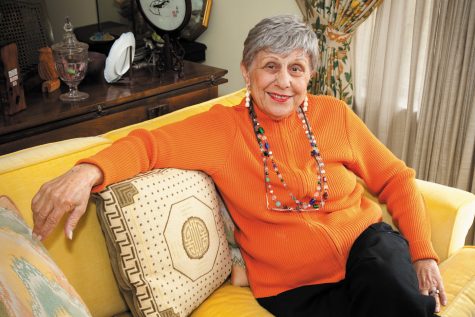
To this date, Cohen, who was inducted into the St. Louis Jewish Sports Hall of Fame in 2010 and later the Missouri Racquetball Hall of Fame, is the only woman from Missouri who has accomplished this feat. A former disability advocate and Jewish Light Unsung Hero, she passed away in 2012.
The St. Louis Boys
In the early 1970s, the J was one of the only facilities in St. Louis allowing teens to play, including with older players. This gave kids exposure to the game that no one else had.
The J’s Smith is responsible for allowing this access and is credited by many as the one who introduced young J members to both handball and racquetball. He would soon become a mentor and advisor to many of the youngsters who began showing promise in racquetball.
“Phil was always around. He was a presence in those days,” said Jerry Zuckerman, 67, and one of the “St. Louis boys,” as they would come to be known.
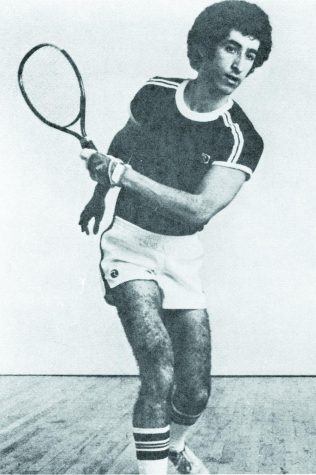
“He was someone you could go to for advice or ask a question about the game,” Zuckerman continued. “All of us teens were allowed to play with people much older and more skilled than us. (That’s) why St. Louis was the first hotbed.”
Along with Zuckerman, the J boasted some of the biggest names in the sport and became known as a “feeder” of the top talent in racquetball. Several national and international champions, including Marty Hogan, Jerry Hilecher, Steve Serot, Ben Koltun, and Andy and David Gross, all honed their skills at the J and became legends of the game.
St. Louis Power Racquetball
Until the mid-1970s, the sport of racquetball was played with modifications of the standard tennis swing, with a full-motion swing and wrist snap to add spin.
“While most racquetball players know that power racquetball was forged in St. Louis, they don’t usually know when and who really started the fire,” wrote Bo Keeley in 1976, in what many have called the bible of the sport, “The Complete Book of Racquetball.”
Before “the St. Louis boys,” a moniker Keeley coined, he himself was one of the top racquetball players in the world from 1971 to 1976. In his day, Keeley was among the biggest hitters with an average speed of 73 mph. But this new generation of players from the J in St. Louis would elevate that speed into the 90s and 100s, and quickly turn the game into one of sheer power.
“The St. Louis boys would go high on the backswing and with an exaggerated body torque and wrist cock, would make ball contact as far back as the rear heel, and a sweeping follow-through,” wrote Keeley. “Hilecher’s hits were estimated at 105 mph, Serot’s at 115 mph and Hogan at 130 mph before hitting 142 mph in 1978.”
The St. Louis power machine would produce more hard hitters, but none matched the original forgers of the early 70s.
“Serot and Hilecher were great athletes who became great racquetball players,” wrote Keeley. “Each learned to play power racquetball at the St. Louis JCC. As much as they had in common their games were totally different.”
1975 – 1977
By 1975, St. Louis Power Racquetball dominated the professional circuit. The leading moneymakers included Marty Hogan who won his first pro title in 1975 in Burlington, Vt., followed by another tournament win in Ft. Lauderdale, Fla.
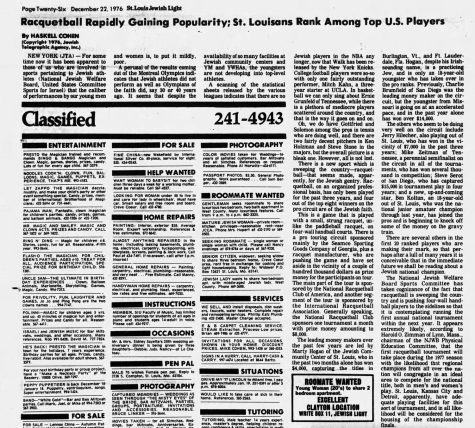
“Hogan, despite his Irish-sounding name, is a practicing Jew, and is only an 18 years old youngster who has taken over the pro ranks,” wrote Haskell Cohen, in a Dec. 26, 1975 article for the Jewish Light. In the same article, Cohen talks about Hilecher having earned $4,000 on the tour, and the “up-and-coming star Ben Koltun, an 18-year-old out of St. Louis who was the national junior amateur champion, has joined the pros and is beginning to knock off some of the money on the gravy train.”
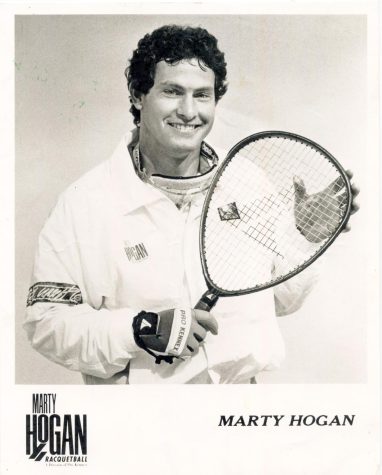
In 1977, both Hogan, 19, and Hilecher, 22 were ranked among the best in the world.
St. Louis Power Domination
Near the end of the 1976-77 NRC Pro Tour, four of the world’s topped ranked players had started their playing careers at the J. Hogan, Serot, Hilecher and Koltun all played their new brand of power racquetball. That same year, the finals of the 1977 IPRO Pro National Doubles consisted of Charlie Brumfield and three St. Louis ‘J’ players, as Brumfield and Serot defeated Hilecher and Zuckerman for their third national doubles title. (They would not lose a single match together.)
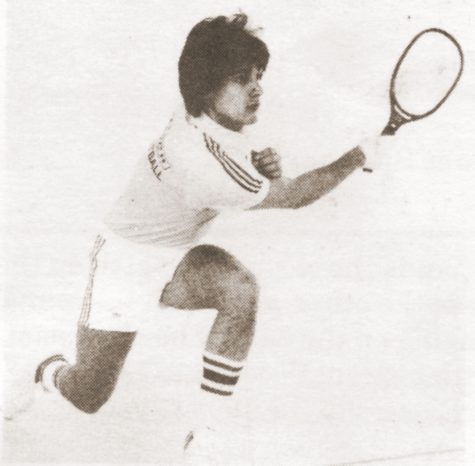
“With faster balls and bigger and better racquets, the St. Louis power game totally eclipsed the strategy and control game that Brumfield and I played,” wrote Keeley. “The power backhand of Serot has been slightly adjusted to less wrist snap and more body torque by today’s pros, and the players now use the top third of the racquet instead of the dead center sweet spot that Hilecher hit his forehand serve and kills, but there is no mistake that these St. Louis boys pioneered power racquetball and the game has forever changed.”
The decade was ending, but not St. Louis’ dominance. Something special had happened at the J during the 1970s. A community was created. The seeds were planted, they took root and continued to grow.
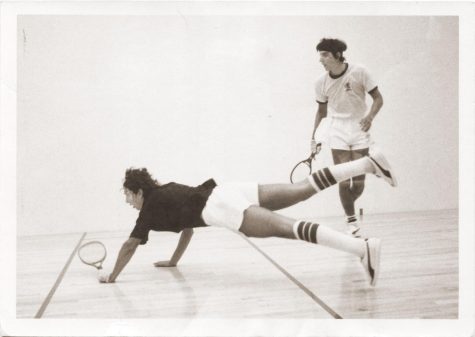
“For me, it was just such a good time,” said Serot, 66, who still lives in St. Louis. “From winning the first Pro Stop in 1974 to playing against all the guys at the J. It was a second home, and all the players were not your enemy, but one big family. I think, the group of us, we laid the foundation for the sport. It was good times back then.”
The 1970s ended with racquetball at a new peak in popularity, and the St. Louis boys continued to thrive. Tournament money and sponsorship deals all followed, but soon many had to begin to think about life after racquetball.
“All of the St. Louis boys dominated the game in every division,” said Zuckerman. “As we went into the 80s, some continued to play, while others continued on to new careers. Hogan and Hilecher made a go of it for a long while.”
The 80s
By the 1980s, yet another generation of players began to emerge from the J. By the time David Henschel of the Jewish Light wrote his July 1980 story, 18-year-old Doug Cohen was the sport’s National Rookie of The Year.
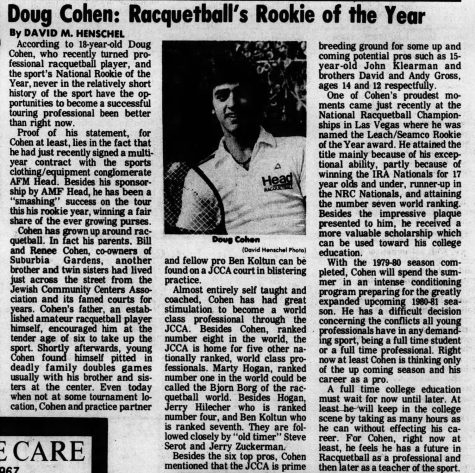
Henschel wrote, “He attained the title mainly because of his exceptional ability, partly because of winning the IRA Nationals for 17-year-olds and younger, runner up in the NRC Nationals, and attaining the world’s number 7 ranking.”
Added Cohen, who owns Douglas Properties, a residential homebuilder, “Never in the relatively short history of the sport have the opportunities to become a successful touring professional been better than right now.”
Like the young men in the 1970s, Cohen grew up near the J and its famed courts. He started playing at the age 6, and by his late teens was Koltun’s practice partner. Cohen would remain on the professional circuit through 1986, maintaining a ranking of 14th in the world.
“The JCC is a prime breeding ground for up-and-coming pros,” said Cohen.
By 1984, teenage brothers David and Andy Gross were on top of the game.
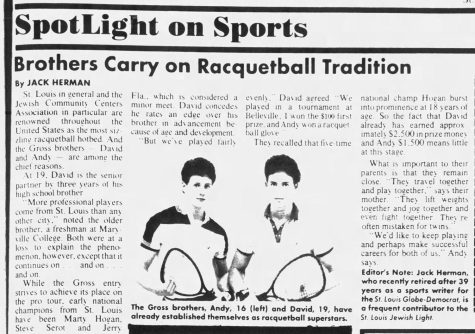
“More professional players come from St. Louis than other cities,” said then-19-year-old David Gross in an interview with Jack Herman of the Jewish Light in October 1984. “The J makes it so convenient to play regularly and improve our games.”
The brothers grew up watching Hogan, who became their mentor and sponsor. By the fall of 1984, David Gross was ranked 18th nationally, with brother Andy right behind him at 19th. They even made the cover of National Racquetball Magazine.
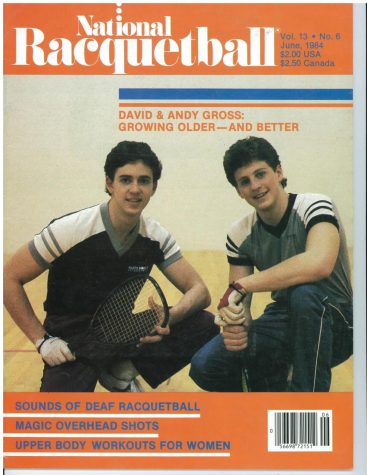
Both brothers would remain on the pro tour through their mid-20s.
1989 | Bringing the St. Louis Boys together
In the spring of 1989, the J held its Second Annual JCCA Pro-Am Racquetball Tournament. More than 250 pro, adult and junior players turned out for the competition. The event attracted a large number of touring pros including St. Louis’ own Marty Hogan, who won the tournament, the Gross brothers, and retired pros Jerry Hilecher, Doug Cohen and Ben Koltun.
Racquetball at the J today
The flashy days of tube socks pulled up to the knees, and headbands are long gone, but the game and the J remain as strong as ever.
USA Racquetball boasts a membership of 7,000 nationally and continues to promote national and international tournaments. In 2021, National Masters Racquetball Association held its National Championship in St. Louis. Doug Cohen was even the winner in the men’s 55+ age bracket.
Today, the J hosts both racquetball lessons and leagues for all skill levels. You can find more info here.
The St. Louis Boys | Jerry Hilecher
Jerry Hilecher grew up in St. Louis, graduating from Parkway West High School in 1972 and receiving his undergraduate degree in Economics at the University of Missouri in 1976. He found racquetball at the age of 10, at the J, after Phil Smith, the director at the time, introduced him and other boys to handball.
“That motion from handball led to power racquetball,” said Hilecher. “It was that stepping through, whipping of the arm of handball that really changed the game of racquetball.”
Considered one of the 10 best racquetball players of all time, he played in the finals of over 100 professional events. He has performed in over one thousand clinics and exhibitions around the world and has 10 National and International titles including the World Racquetball Professional Championships in 1976. Jerry was ranked in the top 4 on the Pro Tour for 10 years in a row, and held the #1 ranking in the world in 1981. Jerry has served as president of the Professional Players Association. He has also coached the United States Junior Olympic racquetball team in 1992 & 1993. He has been inducted in the Missouri Jewish Sports Hall of Fame, and the USA Racquetball Hall of Fame. Hilecher currently is President and Owner of Gateway Telnet, a Communications and Data company and resides in Northridge California.
“Hilecher ignored the strategy of all the top players of the ’60s and ’70s and brought to tournaments a power style all his own,” wrote Keeley. “He was the first true serve-and-shoot big game player. Hilecher was the first to rely on and dominate aces and on the ensuing setup of near-aces. He was murder to play.”
The St. Louis Boys | Steve Serot
Serot grew up in University City, but his family moved west to be closer to the J. According to an interview he gave upon his induction into the National Racquetball Hall of Fame in 2012, Serot was first introduced to racquet sports at age 8, when he got a solid wood paddle from his father for paddleball, the game from which racquetball originated.
He continued playing paddleball, however, using his backhand instead of the more common practice of switching the paddle between both hands.
“When I was about 10, they came out with a wood frame racquet with strings, and most people went to using a backhand so I was ahead of the game by accident,” Serot said.
Serot would soon become one of the top players of all time and the first of the “St. Louis Boys” to become a racquetball superstar. In 1973, at the age of 17, he upset Charlie Brumfield to win the first “Pro Stop” ever and took home the top prize of $1500 for first place. To this day he also holds the title of the youngest player ever to win a pro racquetball tournament.
He held the #2 ranking in singles, finishing in the semis or better 50 times. Serot held the #1 ranking in doubles for both indoor and outdoor winning 4 International Doubles championships between the years of 1973-1976. He won the sportsmanship of the year award in 1978.
While Hilecher and Serot are credited as the innovators, the St. Louis power racquetball story is deeper than just two Hall of Fame players from one club.
“We polish the diamonds in San Diego but they mine them in St. Louis,” said former champion and TV analyst Charlie Brumfield in an interview with Keeley for The Complete Book of Racquetball. Brumfield was very impressed with the talent from St. Louis.
The St. Louis Boys | Jerry Zuckerman
Jerry Zuckerman lived within walking distance of the J and began playing racquetball when he was 16. He was quickly hooked.
“I had good eye-hand coordination, and I developed an understanding of the angles, but part of it was just fun and I just loved hitting the ball where the other person wasn’t,” said Zuckerman.
In 1974, at the age of 18, Zuckerman won the first-ever Junior National Championship beating Steve Trent. In 1977 Zuckerman played a tournament in Topeka, Kansas and it would change his life.
“I took a one-way Greyhound bus from St. Louis to Topeka, Kansas,” said Zuckerman. “It was a good thing I won, because first prize was a new Toyota. I could pick from a new Celica or a Corolla, I chose the Corolla because I could not drive a stick. It was also there, that I met my future wife, Linda!”
That same year, he won the IRA Nationals in Detroit with over 150 players with wins over Mike Yellen and the defending champion. He also won the National Racquetball Clubs Nationals in San Diego in 7 rounds with wins over Hogan and Trent.
“Because I won, I got endorsements from Catalina Sportwear for $15,000, which was a lot,” remembers Zuckerman. “Ektelon became a sponsor and took care of expenses. I earned money playing in tournaments and clinics.”
Zuckerman spent two years on the pro-tour. He topped off his career by being named the Male Athlete of the year for 1977-1978 and placed 2nd in doubles. with Hilecher at Pro Nationals.
The St. Louis Boys | Ben Koltun
Ben Koltun was born and raised in St. Louis and came from the same courts at the St. Louis J. He started playing at age 12, and soon won the USRA Junior and Open National Tournaments in 1976 before being named the 1977 Pro Racquetball Rookie of the Year in which he received a scholarship and a new Datsun 280Z.
In addition, the same year he finished in the top 4 ranking and was a semi-finalist in Pro Nationals. He had many career wins over top players including Hogan, Brumfield, Keeley, Hilecher, and Serot.
“He scared me,” said Blumfield. “Koltun was so turbulent and then so cool, and once in a close match as I wound up to push a ball off the back wall, he dropped his racquet by the thong to his side and watched me roll it off, quipping, ´I just wanted to study your stroke.”
The St. Louis Boys | Marty Hogan
Hogan grew up around The J, where his mother Goldie worked. It was Goldie who handed Marty his first racquet at age eight, and would be his first coach. He would soon be considered to be the greatest player to ever play the game.
“With the help of the elders Marlow Phillips, Joe Zelson, Irv Roselman, and Phil Smith the JCC cultivated many of the top players such as myself, Jerry Zuckerman, Ben Koltun, Andy and David Gross and Doug Cohen,” said Hogan. “The JCC was instrumental to the tutelage of these great players and the success of the early days of racquetball.”
“He won the second-ever Junior National Championship in 1975 and months later became the second-youngest player to win a pro event behind Serot,” wrote Keeley. “Hogan did it by beating Brumfield, Serot, and me consecutively on his way to his first victory in an incredible racquetball career.”
For many years he was the face of the sport, and is also credited with catapulting it into an era of speed and youth.
“Steve Serot and I started it,” said Hilecher. “We’d try for the winner any time unless the ball was above our shoulders. It put a lot of pressure on the other guy. Even playing with the slow ball in those days, we were always going for the kill shot. The offensive power game became the St. Louis game, and Hogan just picked it up and ran with it.”
Hogan may have run with it, but he gives proper credit to the pair, “watching the expertise of pros such as Serot and Hilecher, they encouraged the next generation to be on top of their game.”
Knows for his brash style of play, Hogan played revolutionized the game with his powerful serve and shoot game. Clocked at 142 mph, his serves were almost impossible to see…until it was too late. By age 23, Hogan was already a 3-time national champion. He even began creating videos to show new players, the tricks of the trade.
He was named to the International Jewish Sports Hall of Fame, the US Jewish Hall of Fame, World Racquetball Hall of Fame, and the Ladue High School Sports Hall of Fame. Hogan was ranked the #1 player in the world from 1976-1981 and in 1989. He was an 8 time Professional National Champion, a 1975 USRA National Champion, 1975 Junior National Champion, and 1976 Canadian National Champion. He has won National Doubles three times (1994, 1996, and 2001). In 1997, he won the state championships and in 1999 won the seniors at the US Open.



